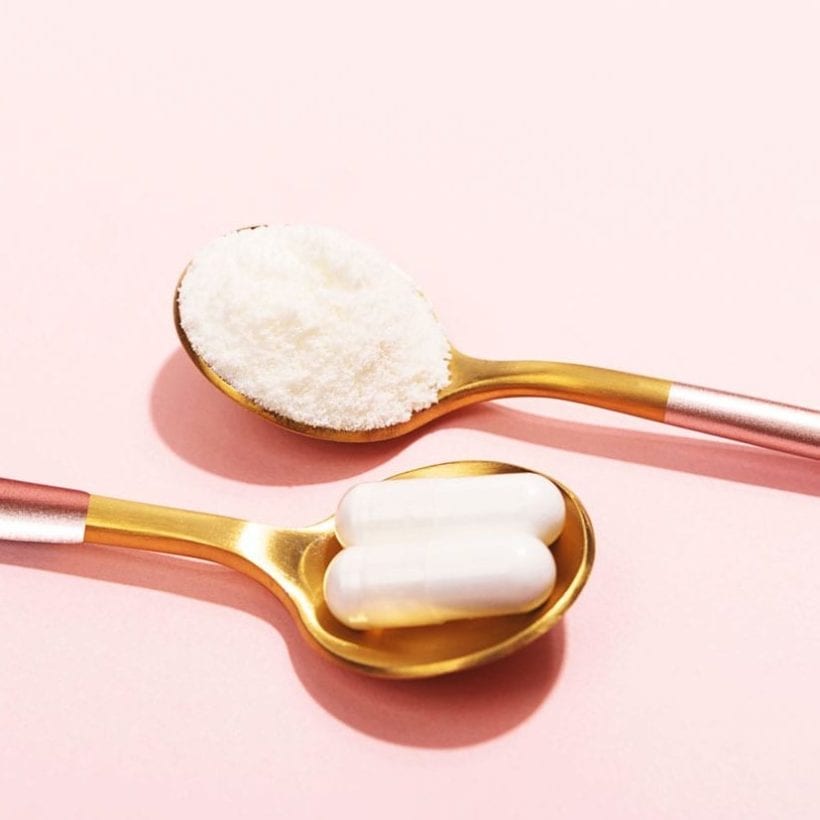Have you noticed more people looking at food labels these days, holding a container up to see what exactly is inside? And each person in the grocery store may be looking at it for different information, be it calories, salt content, or allergen warnings. And some will be looking at the ingredient list to see if it features food additives.

The Food and Drug Administration (FDA) broadly defines food additives as any substance added to a food, says Dr. Whitney Linsenmeyer, Ph.D., RD, LD and spokesperson for the Academy of Nutrition and Dietetics. Food additives are split into two categories, direct and indirect. “Direct food additives are those added for a specific purpose,” for example, emulsifiers like soy lecithin in sandwich bread to make the dough more stable. “Indirect food additives are those that make their way into food in trace amounts through packaging or storing, and are also FDA regulated.” For example, BHT is on a Wheat Thins food label; it’s in the packaging to help ensure freshness. Both direct and indirect are in many packaged and processed foods, with names like emulsifiers, thickeners, sweeteners, preservatives, color additives, fat replacers, stabilizers, flavor enhancers, synthetic glazes, humectants, antioxidants, packing gasses, anti-foaming agents, anti-caking agents, and acidity regulators. (For a complete list of food additives, visit the FDA’s website here.)
So why do they even exist in food? For a variety of reasons, from improving texture and taste to extending shelf life and adding nutrients that could be lost during processing. “Preservatives prevent food spoilage, sweeteners like corn syrup add sweetness, fat replacers like carrageenan alter the mouthfeel in reduced-fat foods, firming agents help maintain crispness,” explains Dr. Linsenmeyer. There are ultimately two basic reasons — food safety and also the bottom line. People usually won’t buy food if it doesn’t taste, look or feel appealing.
Research by the World Health Organization and others has shown that food additives on their own are not harmful to human health. “But if you’re eating them multiple times a day and multiple times a week, the buildup is significant,” says nutrition educator Mira Dessy, of The Ingredient Guru. Adds Dr. Linsenmeyer: “Most Americans consume a diet that relies on heavily-processed or ultra-processed foods that do tend to have a lot of food additives.”
And therein lies the problem: If you rarely eat processed foods containing these ingredients, you don’t need to stress. However, if you or your children are consuming these items on a daily basis, there could be a problem. Recent studies show that food additives can change our gut microbiome. And the American Academy of Pediatrics warns that they can be harmful to children. How so? Here’s a partial list:
- They can interfere with puberty and fertility and male genital development.
- They can cause issues with the thyroid, immune system, and brain development.
- They can increase symptoms of attention deficit hyperactivity disorder (ADHD).
- They can increase certain risks of cancer.
Studies have found that sodium benzoate (a preservative) increased hyperactivity in 3-year-olds. Artificial color is the same.
 If you want to see an example at work: Give a youngster some brightly-colored candy. It’s not just the sugar that will make them go berserk — that Red Dye 40 is also to blame. Furthermore, sodium benzoate in beverages (like Pepsi Max and Sprite) has been linked to increased symptoms of ADHD in college-age kids and when this preservative is combined with vitamin C, it converts to benzene, a compound associated with cancer development. Are you wondering why we let children consume this stuff!?
If you want to see an example at work: Give a youngster some brightly-colored candy. It’s not just the sugar that will make them go berserk — that Red Dye 40 is also to blame. Furthermore, sodium benzoate in beverages (like Pepsi Max and Sprite) has been linked to increased symptoms of ADHD in college-age kids and when this preservative is combined with vitamin C, it converts to benzene, a compound associated with cancer development. Are you wondering why we let children consume this stuff!?
But are they the worst? For Linsenmeyer, sweeteners, including sucrose, corn syrup, and high fructose corn syrup “are by far the most concerning.” Dessy agrees that high fructose sweeteners, including agave nectar, are worrying. “If you have more [sugar] than your liver can process, it saves it and turns it into fatty tissue and you just keep gaining weight.” Dessy is also concerned by carrageenan, a thickener and emulsifier frequently found in non-dairy kinds of milk, cottage cheese, and deli meats. “It’s a seaweed that’s hard on the gut — many of my clients can’t eat it because they will have gut issues including bloating, digestive distress, and changes in bowel habits.” While the FDA still allows its inclusion in products, the National Organic Standards Board voted to ban it from products labeled USDA Organic.
Our experts agree that avoiding food additives is pretty simple: Read labels and “choose whole, unprocessed foods,” says Linsenmeyer. Does the ingredient list “read like a short novel? Are there words you can’t pronounce or don’t recognize as food? Aim to limit those types of food in your diet.” And that comes with the obvious benefit, says Dessy: “When you reduce the amount of additives in your diet, you’re making room for more nutrient-dense, whole foods.”







